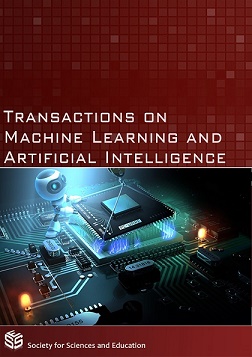Using Artificial Intelligence to Predict Animal Behaviour in Food Webs
DOI:
https://doi.org/10.14738/tmlai.55.3568Keywords:
Fisheries management, data mining, Bayesian network and hidden Markov modelAbstract
Overfishing of species in the marine life has caused oceans to become deserts at a fast pace. The population of specific species such as Cod and Haddock has reduced over the years. This has affected countries that hugely depend on them as a source of food. This study used Dynamic Bayesian Network (DBN) to predict animal behaviour in a food web. Two independent biomass surveys from the North Sea were used to learn predictive models and test them on the Northern Gulf Ocean. The resulting predictive model is expected to unveil useful information about what affects the population of fishes in the Northern Gulf Ocean. In addition, the predictive model was used to make predictions into the future about the effects of tampering with the population of specific species of fish in the same region. The focus was on the Cod species in the George’s Bank in relationship to species network in their food web. Looking at their biomass states and the effects it has on the hidden dependence when there is a change in their biomass states. Also, the different predictive models were used to evaluate species in the George’s Bank based on their performance. The result from the experiment shows that there is a hidden dependence, which is responsible for the collapse of species (Cod); due to the temperature or salinity of the ocean.
References
(1) World health Organisation (2011). Global and regional food consumption patterns and trends. Available: http://www.who.int/nutrition/topics/3_foodconsumption/en/index.html
(2) Overfishing.org (2011) Why overfishing is a problem. Available at: http://overfishing.org/pages/why_is_overfishing_a_problem.php
(3) Greenpeace International (2010). Overfishing. [Online] Available at: http://www.greenpeace.org/international/en/campaigns/oceans/overfishing/
(4) Ali, F., Frank, D., Dirk H., Colin M. (2010). Inferring Species Interaction Networks from Species Abundance Data: A comparative evaluation of various statistical and machine learning methods. Ecological Informatics, 5 (6), 451-464.
(5) DFO (2010). Assessment of Cod stock in the northern Gulf of St. Lawrence (3Pn, 4RS) in 2009. DFO Canada Science Advisory Secretariat Science Advisory Report 2010/011
(6) DFO-SCIENCE (2009) What’s Holding Back the Cod Recovery? [Online] Available at: http://www.dfo-mpo.gc.ca/science/Publications/article/2006/01-11-2006-eng.htm
(7) The Independent (2007). North Sea cod population recovering, scientists say. [Online] Available: http://www.independent.co.uk/environment/nature/north-sea-cod-population-recovering-scientists-say-397350.html
(8) Dunne, J. A., Richard J. W, and Martinez N. D. (2002). Network structure and biodiversity loss in food webs: robustness increases with connectance. Ecology Letters Vol. 5:558–567
(9) Han, J., Pei, J., & Kamber, M. (2011). Data mining: concepts and techniques. Elsevier.
(10) Witten I.H. & Frank E. (2005) Data Mining: Practical Machine Learning Tools and Techniques. 2nd ed. San Francisco: Morgan Kaufmann.
(11) Tucker, A. and Duplisea, D. (2012). Bioinformatics tools in predictive ecology: applications to fisheries. Philosophical Transactions of the Royal Society, Biological Science 367(1586), 279-290
(12) Kevin Murphy (2002). Dynamic Bayesian Network: Representation, Inference, and Learning. PhD Dissertation, University of California, Berkeley.
(13) Thomas Dean and Keiji Kanazawa (1989). A model for reasoning about persistence and causation. Artificial Intelligence, 93(1-2), 1-27.
(14) Fatih C, Ratna B C (2005). Dynamic Bayesian Networks for Machine
Diagnostics: Hierarchical Hidden Markov Models vs. Competitive Learning. Proceedings of International Joint Conference on Neural Networks. Vol. 3.
pp 1752 – 1757.
(15) Smyth, P. (1997). Belief networks, hidden Markov models, and Markov random fields: a unifying view, Pattern Recognition Letters 18(11-13) 1261-1268.
(16) Friedman, N. and Goldszmidt, M. (1996) Discretization of continuous attributes while learning Bayesian networks. Proceedings Of the 13th International Conference on Machine Learning, 157-165.
(17) Gimpel K (2005). Junction Tree Algorithm for Inference in DBNs. School of Computer Science, CMU, United States.
(18) Payam R, Lei T, Huan L (2008). Cross-Validation. Arizona State
University, Arizona, USA.






